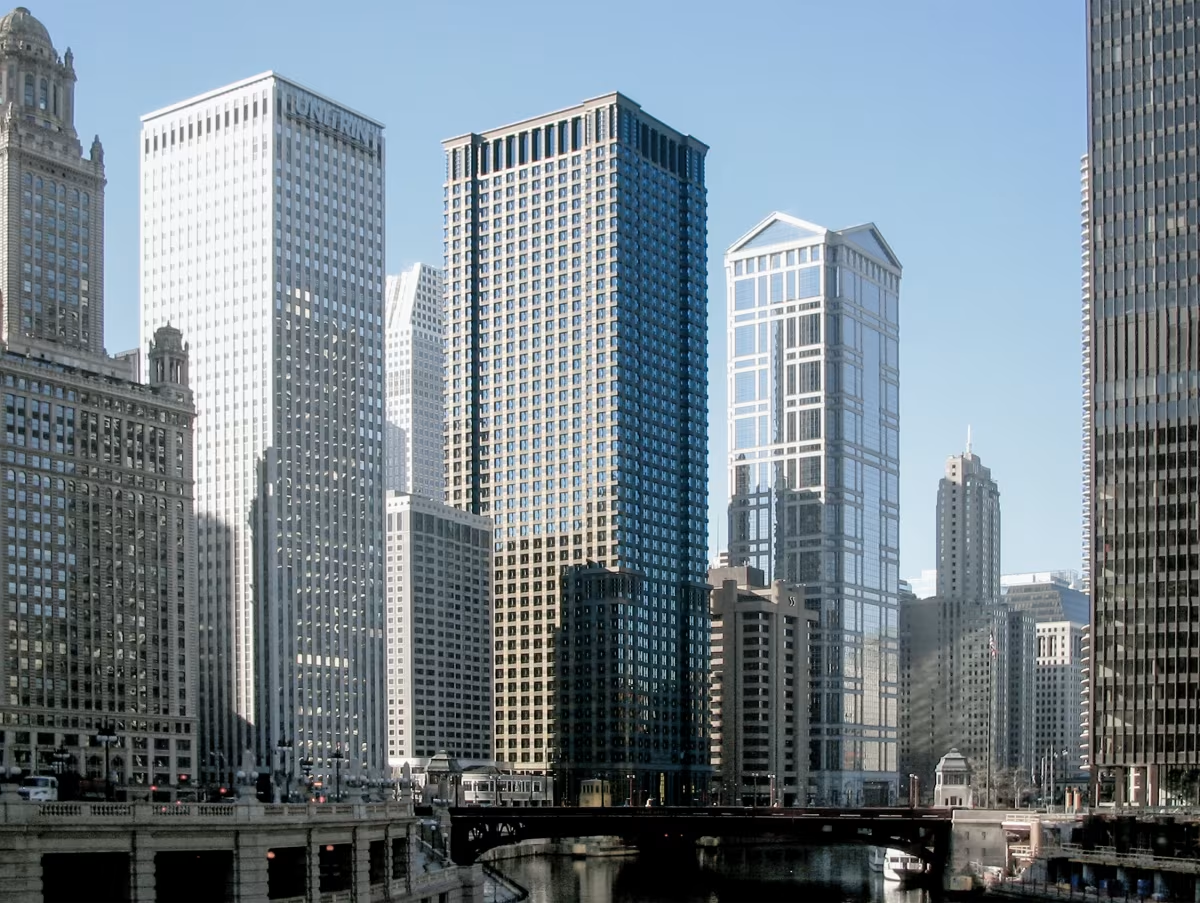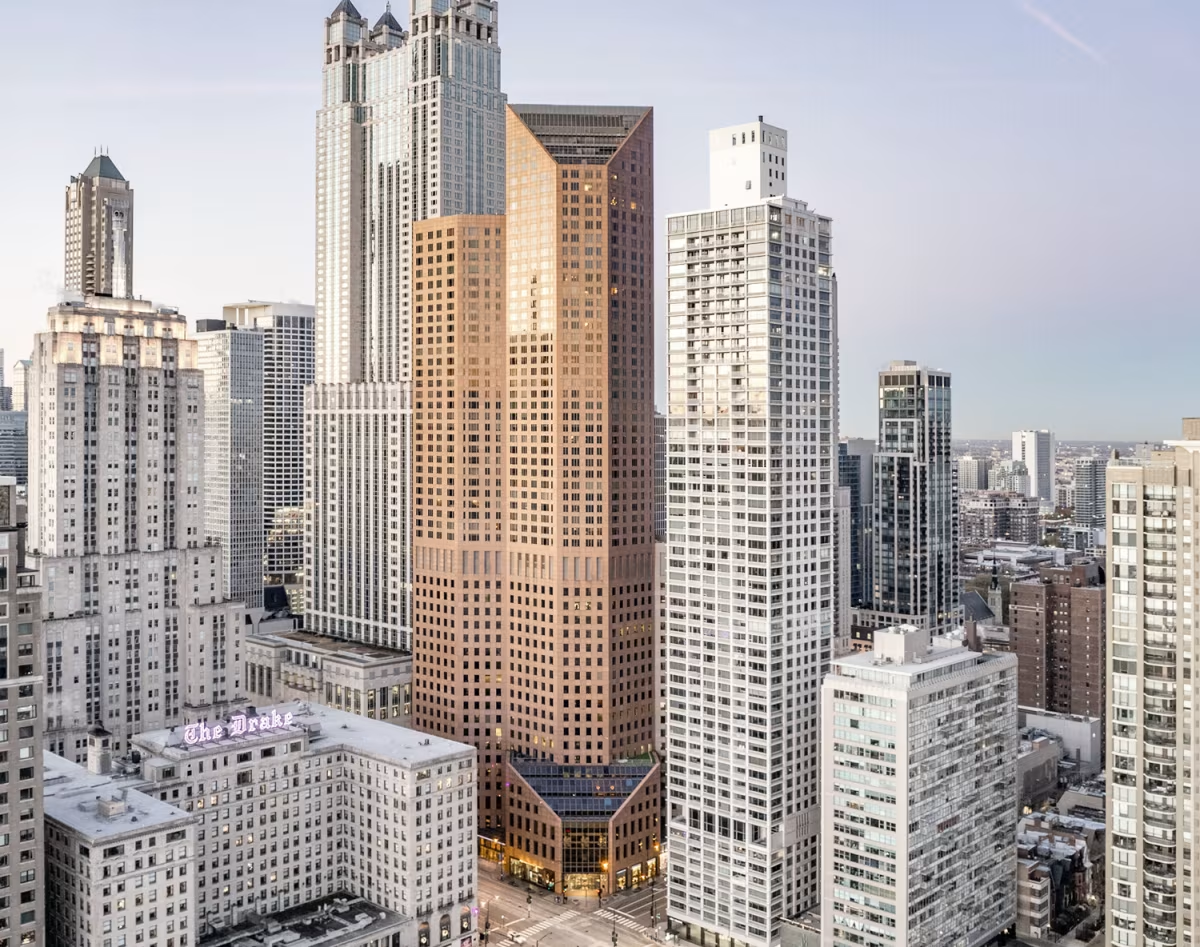Leo Burnett Building vs One Magnificent Mile Building


Comparing the Leo Burnett Building and the One Magnificent Mile Building is interesting because they both rise in Chicago, IL, yet they were conceived by two different design teams, Roche Dinkeloo & Associates and Skidmore, Owings & Merrill, and were completed at different points in time. They were finished more than 6 years apart.
This contrast within the same city allows us to see how different creative minds interpreted the evolving needs of Chicago across time.
Let's take a closer look!
Height & Size
The One Magnificent Mile Building is clearly the larger tower of the two, both in terms of height and number of floors. It rises to 673ft (205m) with 57 floors above ground, while the Leo Burnett Building reaches 636ft (194m) with 46 floors above ground.
Of course, each project may have faced different briefs or regulatory constraints, which we don't really know about and could also explain the outcome.
Architectural Style
Both the Leo Burnett Building and the One Magnificent Mile Building were designed in line with the aesthetic conventions of the Postmodernism style.
At the time, this style was at the height of its popularity. So both Roche Dinkeloo & Associates and Skidmore, Owings & Merrill followed what was in many ways expected of them, producing designs that fit comfortably within contemporary architectural norms, rather than breaking with convention.
Uses
The One Magnificent Mile Building follows a mixed-use model, combining retail, commercial and residential. In contrast, the Leo Burnett Building has remained primarily commercial.
The One Magnificent Mile Building offers 182 residential units.
The Leo Burnett Building also provides 113 parking spaces.
Structure & Facade
The two buildings opted for different structural and facade solutions.
The Leo Burnett Building uses a Trussed Tube In Tube system, which combines a central core with a perimeter tube reinforced by diagonal bracing, while the One Magnificent Mile Building uses a Frame system, that relies on a regular grid of columns and beams to sustain its weight.
And when it came to the facade, the Window Wall went with a Window Wall facade, which uses panels fitted between floor slabs, leaving slab edges visible, while the One Magnificent Mile Building opted for a Modular facade, that employs prefabricated panels, often mixing solid surfaces with smaller windows.
| Leo Burnett Building | One Magnificent Mile Building | |
|---|---|---|
| Roche Dinkeloo & Associates | Architect | Skidmore, Owings & Merrill |
| 1986 | Construction Started | 1978 |
| 1989 | Year Completed | 1983 |
| Postmodernism | Architectural Style | Postmodernism |
| Commercial | Current Use | Mixed |
| 46 | Floors Above Ground | 57 |
| 194 m | Height (m) | 205 m |
| Trussed Tube In Tube | Structure Type | Frame |
| A Concrete Core And Steel | Vertical Structure Material | Concrete |
| Concrete And Steel | Horizontal Structure Material | Concrete And Steel |
| Yes | Facade Structural? | Yes |
| Green Granite, Glass, Steel | Main Facade Material | Granite, Glass |
| Cohen Barreto Marchertas | Structural Engineer | Fazlur Rahman Khan |
| IL | State | IL |
| Chicago | City | Chicago |
| 35 West Wacker Drive | Address | 940 980 North Michigan Avenue |